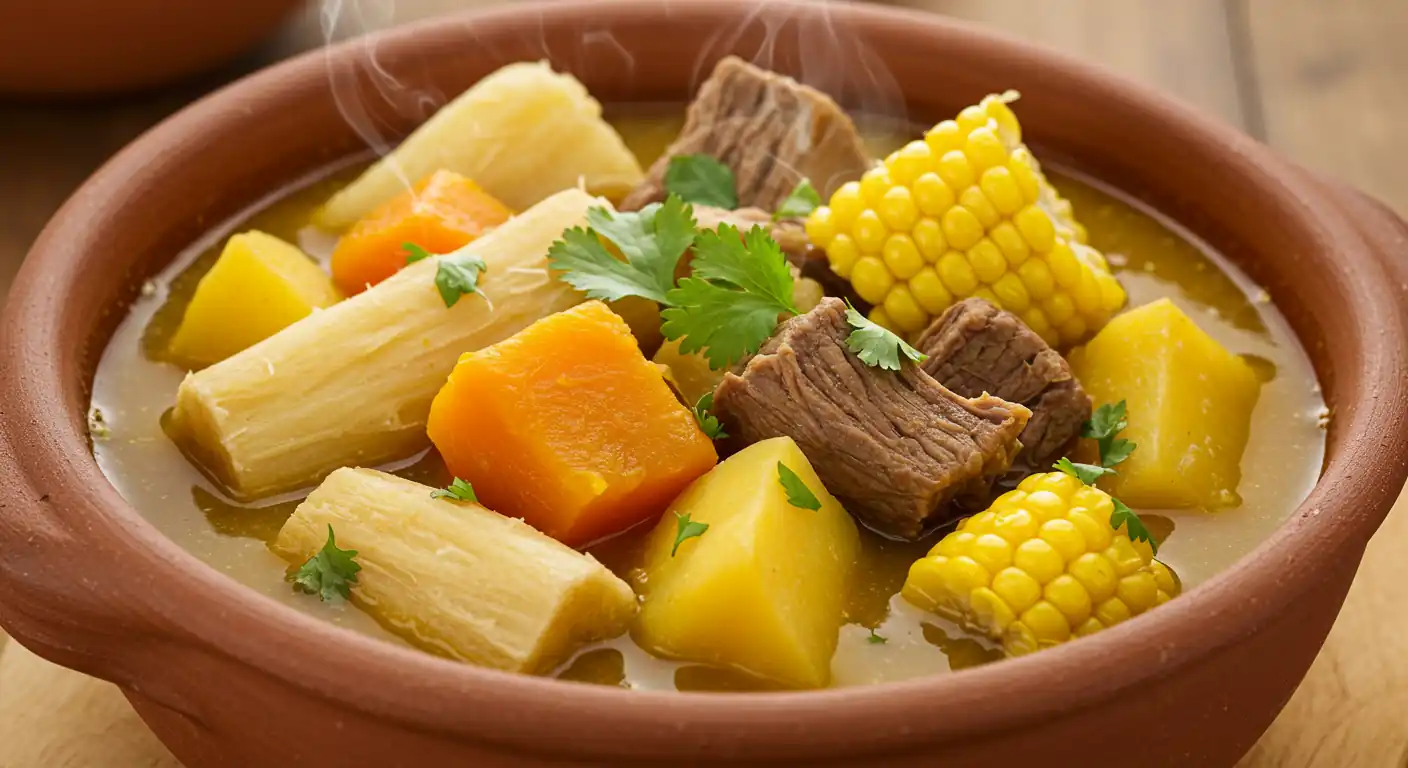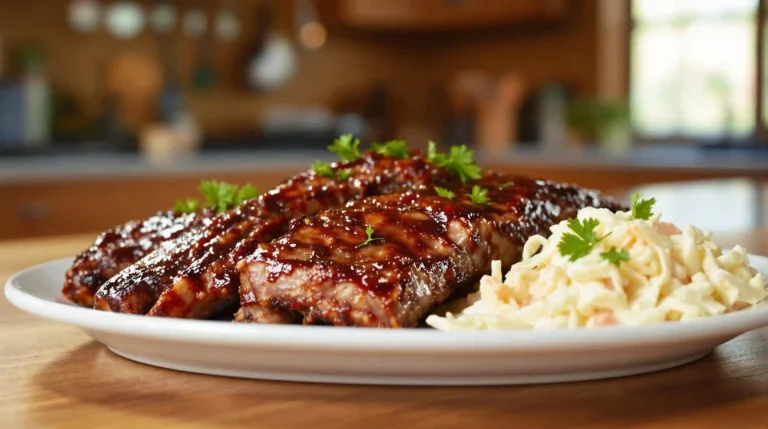Incredible Sancocho Stew: Your Easy Secret
There’s something incredibly comforting about a big, steaming pot of stew, especially one that’s packed with flavor, history, and a variety of satisfying textures. Enter Sancocho Stew, a beloved staple across Latin America and the Caribbean. It’s more than just a soup; it’s a celebration in a bowl, a dish that brings families together, warms you from the inside out, and tells a story of cultural fusion.
If you’ve never tried Sancocho Stew, you’re in for a treat. And if you have, you know the magic it holds. This recipe guide will walk you through creating your own delicious pot of Sancocho Stew right in your kitchen. We’ll keep it simple, focus on flavor, and give you plenty of tips to make it your own.
What Exactly is Sancocho Stew?
At its heart, Sancocho Stew is a robust, often thick soup or stew featuring large pieces of meat, tubers (root vegetables), and other vegetables simmered in a flavorful broth. The name “Sancocho” likely comes from the Spanish verb sancochar, meaning to parboil or simmer.
While its exact origins are debated, it’s clear that Sancocho Stew has roots in Spanish Olla Podrida (a hearty stew), blended with indigenous ingredients and African culinary influences. This history is reflected in the diverse ingredients commonly used.
Almost every Latin American country has its own version. You’ll find variations in Colombia, the Dominican Republic, Puerto Rico, Panama, Venezuela, Ecuador, and beyond. Each region adds its unique touch, differing in the types of meat, vegetables, and seasonings used. Some are brothier, some thicker; some feature specific local ingredients. But the core concept remains: a hearty, soul-satisfying stew.
Why You’ll Absolutely Adore This Sancocho Stew Recipe
- Incredibly Flavorful: The combination of slow-simmered meats, earthy root vegetables, and aromatic herbs creates a depth of flavor that’s hard to beat.
- Hearty and Satisfying: This is a substantial meal! The chunks of meat and starchy vegetables make Sancocho Stew incredibly filling and perfect for a chilly day or when you need serious comfort food.
- Surprisingly Simple: While it involves several ingredients, the actual cooking process is straightforward – mostly simmering everything together until tender.
- Adaptable: Don’t have one specific root vegetable? Swap it out! Prefer chicken over beef? Go for it! Sancocho Stew is wonderfully flexible.
- A Taste of Culture: Making and sharing Sancocho Stew connects you to a rich culinary tradition enjoyed by millions.
Gathering Your Ingredients for Sancocho Stew
The beauty of Sancocho Stew lies in its flexibility, but here’s a classic combination that yields fantastic results. Think of this as a starting point for your own perfect pot.

The Meats (Choose One or More!)
- Chicken: About 2-3 lbs (1-1.5 kg) bone-in chicken pieces (thighs, drumsticks work well for flavor). This is common in many Sancocho variations.
- Beef: About 2 lbs (1 kg) beef stew meat (like chuck or brisket), cut into large chunks. Adds a deep, rich flavor.
- Pork: About 2 lbs (1 kg) pork shoulder or ribs, cut into chunks. Offers another layer of savory taste.
- (Optional: Some traditional recipes, like Dominican “Sancocho de Siete Carnes,” use multiple types of meat!)
The Vital Root Vegetables (The Stars of the Stew!)
You’ll want a good variety, about 4-5 lbs (around 2 kg) total, peeled and cut into large, 1-2 inch chunks:
- Yuca (Cassava): Essential for its starchy texture. Find it fresh (needs peeling and dewaxing) or frozen (often easier).
- Yautía (Malanga/Taro): Comes in white (blanca) and purple (lila) varieties. Adds a creamy, slightly nutty element. If you can’t find it, use more potato or taro root.
- Ñame (Yam): Not the orange sweet potato, but a true yam. It’s starchy and slightly earthy. Again, more potato can substitute if needed.
- Potatoes: Regular potatoes work fine, adding familiar bulk.
- Plantains (Plátanos): Use green plantains. They cook up starchy and firm, absorbing the broth beautifully. Cut into thick rounds.
- Pumpkin or Squash (Auyama/Calabaza): Adds sweetness and color. Butternut squash is a good substitute.
The Flavor Builders (Aromatics and Herbs)
- Onion: 1 large yellow or white onion, roughly chopped.
- Garlic: 4-6 cloves, minced or smashed.
- Bell Peppers: 1 green bell pepper, roughly chopped. (Red can be used too).
- Cilantro: A large bunch, stems and leaves separated. Stems go in early for flavor, leaves are for finishing.
- Optional Sofrito: 2-3 tablespoons of pre-made or homemade sofrito (a blend of onions, peppers, garlic, herbs) can jumpstart the flavor.
The Unique Touches
- Corn on the Cob: 2-3 ears, cut into thick rounds. Adds sweetness and texture.
Liquids & Seasonings
- Broth: 8-10 cups (about 2-2.5 liters) of chicken or beef broth (match your meat choice if possible). Use low-sodium so you can control the salt. Water can substitute for part of the broth.
- Seasoning:
- Adobo seasoning (all-purpose Latin blend) – to taste
- Sazón Goya con Culantro y Achiote (for color and flavor) – 1-2 packets (optional, but traditional)
- Salt and freshly ground black pepper – to taste
- A squeeze of lime juice – at the end, brightens flavors.
- Olive Oil: 1-2 tablespoons for searing meat/sautéing aromatics.
Essential Kitchen Tools
You don’t need anything fancy, just the basics:
- Large Stockpot or Dutch Oven: Needs to be big enough to hold all the ingredients and liquid (at least 8-quart/8-liter capacity).
- Sharp Knife: For chopping all those vegetables and meats.
- Cutting Board: A large one is helpful.
- Vegetable Peeler: Essential for the root veggies.
- Large Spoon or Ladle: For stirring and serving.
How to Make The Perfect Sancocho Stew: Step-by-Step
Let’s get cooking! This process focuses on building layers of flavor.
Estimated Prep time: 30-40 minutes Cook time: 1.5 – 2.5 hours (depending on meat)
Step 1: Prep Your Ingredients
- Wash, peel, and chop all your vegetables into large, fairly uniform chunks (about 1.5-2 inches). Keep the softer veggies (like pumpkin/squash and potatoes) separate from the harder root vegetables (yuca, yautía, ñame). Keep plantains separate too. Chop onions, peppers, and mince garlic. Separate cilantro stems and leaves.
- If using beef or pork, pat the meat dry and season generously with salt, pepper, and maybe some adobo. If using chicken, you can season it now too.
Step 2: Build the Flavor Base
- Heat the olive oil in your large pot over medium-high heat.
- If using beef or pork: Sear the meat chunks in batches until browned on all sides. Don’t overcrowd the pot. Remove the meat and set aside.
- Lower the heat to medium. Add the chopped onion and bell pepper to the pot (add a bit more oil if needed). Sauté for 5-7 minutes until softened.
- Add the minced garlic and cilantro stems (and sofrito, if using). Cook for another 1-2 minutes until fragrant. Don’t let the garlic burn!
- If using chicken: You can add the seasoned chicken pieces now and brown them slightly on all sides, or simply add them in the next step.
Step 3: Add Liquids and Tougher Ingredients
- Return the seared meat (if using beef/pork) to the pot. If using chicken and you didn’t brown it, add it now.
- Pour in the broth (and water, if using). Stir well, scraping up any browned bits from the bottom of the pot (that’s flavor!).
- Add the hardest root vegetables: yuca, yautía, ñame. These take the longest to cook.
- Add the Sazón packets (if using) and a good pinch of Adobo seasoning, salt, and pepper. Remember you can adjust later.
- Bring the mixture to a boil, then reduce the heat to low, cover the pot loosely (leaving a small gap for steam to escape), and let it simmer gently.
Step 4: Simmer and Add Remaining Ingredients

- Simmer for about 45 minutes to 1 hour (for chicken) or 1.5 – 2 hours (for beef/pork), or until the meat is becoming tender.
- Now, add the remaining vegetables in stages based on cooking time:
- Add the green plantain chunks and corn on the cob rounds. Simmer for another 20 minutes.
- Add the potatoes and pumpkin/squash chunks. Simmer for a final 15-20 minutes, or until all the vegetables are fork-tender but not mushy, and the meat is fully cooked and tender. The broth should have thickened slightly from the starches.
Step 5: Finish and Serve
- Taste the broth carefully. Adjust seasoning as needed with more salt, pepper, or Adobo. If it tastes a little flat, a squeeze of fresh lime juice can work wonders.
- Stir in the chopped fresh cilantro leaves just before serving.
- Ladle the Sancocho Stew generously into large bowls, making sure each serving gets a good mix of meat, different vegetables, and broth.

Pro Tips for Making the Best Sancocho Stew
- Cut Veggies Large: This prevents them from disintegrating during the long simmer.
- Layer the Veggies: Add vegetables based on how long they take to cook. Hard roots first, softer ones later.
- Don’t Over-Stir: Especially towards the end, stir gently to avoid breaking up the tender vegetables too much.
- Taste and Adjust: Seasoning is key. Taste the broth periodically throughout the cooking process and adjust as needed.
- Patience is Key: Allow the stew enough time to simmer so the flavors meld and the meat becomes perfectly tender.
- Skim if Needed: If a lot of fat renders from the meat, you can skim some off the top during simmering if you prefer a leaner stew.
Sancocho Stew Variations: A Taste of Latin America
While our recipe is a great all-around version, explore these regional takes:
- Dominican Sancocho: Often features multiple meats (“Sancocho de Siete Carnes” is legendary!), including chicken, beef, pork, goat, and sometimes smoked meats like ham hocks. It’s typically rich and deeply flavored.
- Colombian Sancocho: Varies by region. Coastal versions might include fish. Chicken Sancocho (Sancocho de Gallina) is very popular, often served with a side of rice, avocado, and aji (hot sauce). Often includes potato, yuca, and plantain.
- Puerto Rican Sancocho: Often includes corn, calabaza (pumpkin), potatoes, yuca, plantains, and typically uses beef or chicken, sometimes corned beef. Sofrito is a key flavor base.
- Vegetarian/Vegan Sancocho Stew: Easily adaptable! Omit the meat and use a rich vegetable broth. Bulk it up with more root vegetables, corn, pumpkin, and consider adding hearty beans like chickpeas or kidney beans for protein. Ensure your seasonings (like Sazón) are meat-free if aiming for strictly vegan.
What to Serve with Your Hearty Sancocho Stew
Sancocho Stew is practically a meal in itself, but traditional accompaniments enhance the experience:
- White Rice: Perfect for soaking up that delicious broth.
- Avocado Slices: Creamy avocado provides a cool contrast to the hot stew.
- Tostones: Fried green plantains add a crunchy element.
- Lime Wedges: For squeezing over the top to brighten the flavors.
- Hot Sauce (Aji): For those who like a spicy kick.
Storing and Reheating Your Sancocho Stew
Sancocho Stew is fantastic the next day as the flavors continue to meld.
- Refrigeration: Let the stew cool completely, then store it in an airtight container in the refrigerator for up to 3-4 days.
- Freezing: You can freeze Sancocho Stew, but be aware that the texture of some root vegetables, particularly potatoes and yuca, can become slightly softer or grainier upon thawing. Freeze in airtight containers or freezer bags for up to 2-3 months. Thaw overnight in the refrigerator.
- Reheating: Gently reheat the stew on the stovetop over medium-low heat until warmed through. Avoid boiling vigorously, which can make the vegetables mushy. You may need to add a splash of broth or water if it has thickened too much.
Frequently Asked Questions (FAQ) about Sancocho Stew
Q1: What if I can’t find certain root vegetables like yuca or yautía?
Don’t worry! You can substitute with more potatoes, sweet potatoes (the white kind if possible, for less sweetness), parsnips, or taro root if available. The key is to have a variety of starchy vegetables.
Can I make Sancocho Stew in a slow cooker or Instant Pot?
Slow Cooker: Yes! Brown meat (if using) and sauté aromatics first on the stove if possible. Then combine everything (holding back softer veggies like potato/pumpkin and fresh cilantro until the last hour or so) in the slow cooker. Cook on low for 6-8 hours or high for 3-4 hours.
Instant Pot: Yes. Use the sauté function to brown meat and cook aromatics. Add liquids, harder roots, and meat. Pressure cook according to meat type (beef might take 30-40 mins high pressure, chicken maybe 15-20 mins). Release pressure, then add softer veggies/plantains/corn and simmer using the sauté function (low) until tender (15-20 mins). Stir in cilantro at the end.
Is Sancocho Stew spicy?
Typically, no. The base flavor is savory and rich, not spicy. Spiciness is usually added at the table with hot sauce (aji).
How thick should Sancocho Stew be?
It varies! Some like it very brothy, almost like a soup with big chunks. Others prefer it thicker, more like a traditional stew, where the starches from the vegetables have broken down a bit and thickened the liquid. Cook it to your preference – simmer longer uncovered if you want it thicker.
Enjoy Your Delicious Bowl of Sancocho Stew!
Making Sancocho Stew is a rewarding process. It’s a dish that requires a little time and love, but the payoff is immense – a deeply flavorful, nourishing, and comforting meal that warms the soul. Whether you stick closely to this recipe or adapt it with your favorite ingredients, embrace the spirit of Sancocho Stew: hearty, generous, and meant to be shared.
So gather your ingredients, put on some music, and get ready to create a truly special pot of Sancocho Stew. ¡Buen provecho!







